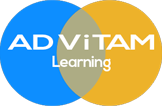Description
Safeguarding Children | Level 2 | Online Training Course | CPDUK Accredited | Instant Course Access | Includes Assessment & Certificate | Instant Certificate Download.
Welcome to our online Safeguarding Children – Level 2 training course for front-line healthcare and social care providers.
All organisations that work with or come into contact with children should have adequate safeguarding policies and procedures to ensure that every child, regardless of their age, disability, gender reassignment, race, religion or belief, sex, or sexual orientation, has a right to equal protection from harm.
Setting up and following good safeguarding policies and procedures means children are safe from adults and other children who might pose a risk. This includes voluntary and community organisations, faith groups, private sector providers, as well as schools, hospitals and sports clubs.
Certificate duration: 2 years
Entry requirements: No entry restrictions
Recommended prerequisites: N/A
Assessment type: End of course assessment
Assessment pass mark – 80% needed to pass and gain a CPD certificate
Cost(s) of assessment and certification – All costs included in the course price
Awarding/Accrediting body – CPD Certification Service (CPDUK)
Who is the course for?
This online Safeguarding children – Level 2 training course should be completed by those who work with children and young people, including:
- NHS medical, nursing, AHP and care staff,
- Locum doctors and nurses,
- Locum allied health professionals (AHPs),
- Agency nurses,
- Agency workers,
- Healthcare Assistants,
- Support workers,
- Care assistants,
- Nursery staff,
- Children’s services and
- Community services.
What is covered in this course?
This online Safeguarding Children – Level 2 training course covers the following:
- An introduction to the fundamental principles of safeguarding children,
- Understanding why safeguarding children is essential,
- The Human Rights of Children – The United Nation’s Convention on the Rights of the Child (UNCRC),
- An understanding of what safeguarding children means,
- An awareness of vital safeguarding children legislation,
- An understanding of the standard terms used in safeguarding children,
- An understanding of the complex nature of child abuse,
- The ‘Toxic Trio’ concerning safeguarding children,
- An awareness of the main types of abuse in children and young people,
- An awareness of the dangers of radicalisation of children and young people,
- An awareness of the risks of child trafficking,
- Knowledge of female genital mutilation (FGM) in girls and young women,
- Understanding of the dangers (to children and young people) from the internet and social networking sites,
- Emerging themes about child protection, safeguarding children and young people,
- Knowing what to do if a child or young person discloses abuse,
- Knowing what to do if you suspect child abuse,
- Understanding your responsibilities in protecting children and young adults from abuse, and
- Where to find useful information and resources regarding the safeguarding of children (online child protection learning resources).
Course aims
The aims and objectives of this online Safeguarding Children – Level 2 training course are to:
- Provide a clear understanding of the legislation regarding the safeguarding of vulnerable children and young adults across the UK,
- Inform learners about their responsibilities in safeguarding vulnerable children and protecting them from harm, neglect and abuse,
- Prevent harm and to reduce the risk of abuse or neglect to children, and
- Provide essential child protection training resources in an engaging and meaningful way.
Learning outcomes
On completion of this online Safeguarding Children – Level 2 training course, the learner will:
- Be able to recognise potential indicators of child maltreatment – physical, emotional, sexual abuse, and neglect including radicalisation, child trafficking and female genital mutilation (FGM),
- Understand the impact a parent/carers physical and mental health can have on the well-being of a child or young person, including the effects of domestic violence,
- Understand the importance of children’s rights in the safeguarding/child protection context,
- Know what action to take if there are concerns, including to whom concerns should be reported and from whom to seek advice,
- Understand the risks associated with the internet and online social networking,
- Be aware of relevant legislation (i.e. Children Acts 1989, 2004 and the Sexual Offences Act 2003),
- Understand what constitutes child maltreatment and be able to identify any signs of child abuse or neglect,
- Be prepared to act as an effective advocate for a child or young person,
- Understand the potential impact of a parent’s/carer’s physical and mental health on the wellbeing of a child or young person to be able to identify a child or young person at risk,
- Be prepared to identify their professional role, responsibilities, and professional boundaries and those of colleagues in a multidisciplinary team and a multi-agency setting,
- Know-how and when to refer to social care if safeguarding/child protection is identified as a concern,
- Be able to document safeguarding/child protection concerns in a format that informs the relevant staff and agencies appropriately,
- Know how to maintain appropriate records including being able to differentiate between fact and opinion,
- Be prepared to identify the proper and relevant information and how to share it with other teams,
- Understand critical statutory and non-statutory guidance and legislation including the UN Convention on the Rights of the Child and Human Rights Act,
- Be aware of the risk of female genital mutilation (FGM) in specific communities, be willing to ask about FGM in the course of taking a routine history, know who to contact if a child makes a disclosure of impending or completed mutilation, be aware of the signs and symptoms and be able to refer appropriately for further care and support,
- Be mindful of the risk factors for radicalisation and know who to contact regarding preventive action and support for those vulnerable young persons who may be at risk of, or are being drawn into, terrorist-related activity, and
- Be able to identify and refer a child suspected of being a victim of trafficking and/or sexual exploitation.
This online Safeguarding Children – Level 2 training course covers the core learning outcomes per the Intercollegiate Document (2014). However, it needs to be emphasised that dependent upon role/speciality, there may be additional learning needs which will need to be addressed. While some of these needs can be addressed through training, some will be achieved through clinical experience and supervision.
What is child safeguarding?
Safeguarding refers to the actions that are taken to promote the welfare of children and protect them from harm.
Safeguarding children involves the following:
- Protecting children from abuse and maltreatment,
- Preventing harm to children’s health or development,
- Ensuring children grow up with the provision of safe and effective care, and
- Taking action to enable all children and young people to have the best outcomes.
Is safeguarding children the same as child protection?
Child protection is part of the safeguarding process. It focuses on protecting individual children identified as suffering or likely to suffer significant harm. This includes child protection procedures which detail how to respond to concerns about a child.
Safeguarding children and child protection guidance and legislation apply to all children in the UK up to the age of 18.
Why is this online Safeguarding Children – Level 2 course important?
Safeguarding children and young people from harm and providing an environment in which children can flourish is a critical societal value. Children and young people have a right to be “protected from all forms of violence, abuse, neglect and bad treatment by their parents or anyone else who looks after them” (United Nations 1989). Organisations are required to co-operate with other agencies to protect individual children and young people from harm. The importance of this has been powerfully highlighted as part of recent inquiries exploring child and young people safeguarding issues.
Supportive and trustful relationships between children, their families and healthcare staff will be a critical factor in enabling effective safeguarding management. Dependent upon roles, healthcare workers can be in an essential position in helping to recognise child maltreatment. Healthcare staff need to be alert to the signs and symptoms of maltreatment or neglect. They will have a vital role in ensuring useful recording, communication and sharing of information, to help improve identification and provide appropriate support is put in place for children and young people in need or at risk of harm.
Healthcare staff will need to exercise professional judgement focused on the safety and welfare of children and young people, and know-how to make a referral when appropriate. Accordingly, healthcare organisations need to ensure that all staff that might be in contact with children or involved with their care have a clear awareness and understanding of safeguarding issues.








